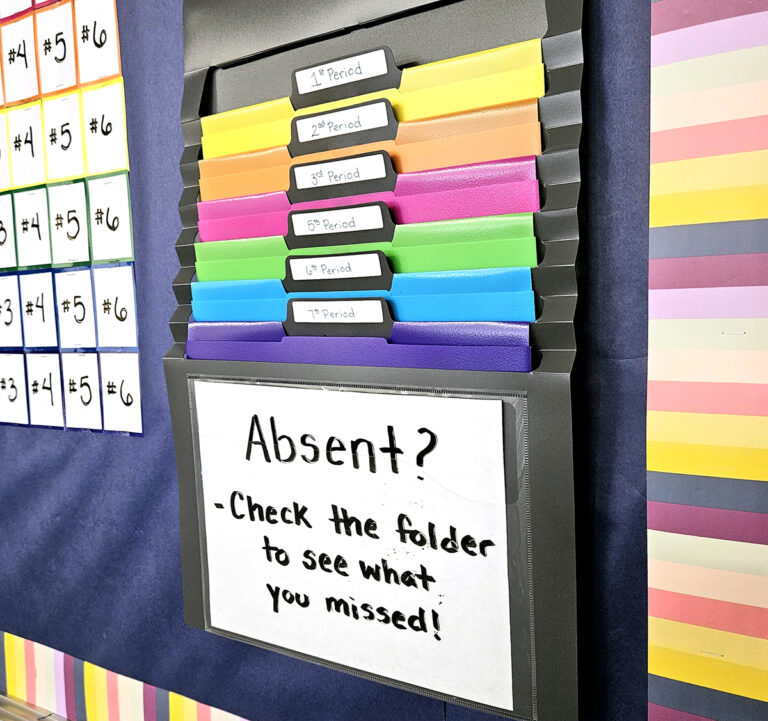As art teachers, we know cleanup can be one of the trickiest times in our classrooms. Add painting to the mix, and sometimes the chaos is just too much. What if I told you there was a better way to clean up your paint materials? A system that would have you and your kids calmly putting things away with time to spare? No, it’s not a dream, it’s reality! The trick is to stop focusing solely on cleanup time and include the rest of the class period as well.
How to Implement a Solid Routine for Painting Days
1. Think about how you set up materials.
A smooth cleanup time starts with how you set up the materials. Students should know what to expect. Keep materials available in the same place every time. This will prevent confusion.
Here are a few specific tips.
Sinks
Sinks are pretty permanent, but numbering your sinks can prevent confusion and keep traffic flowing.
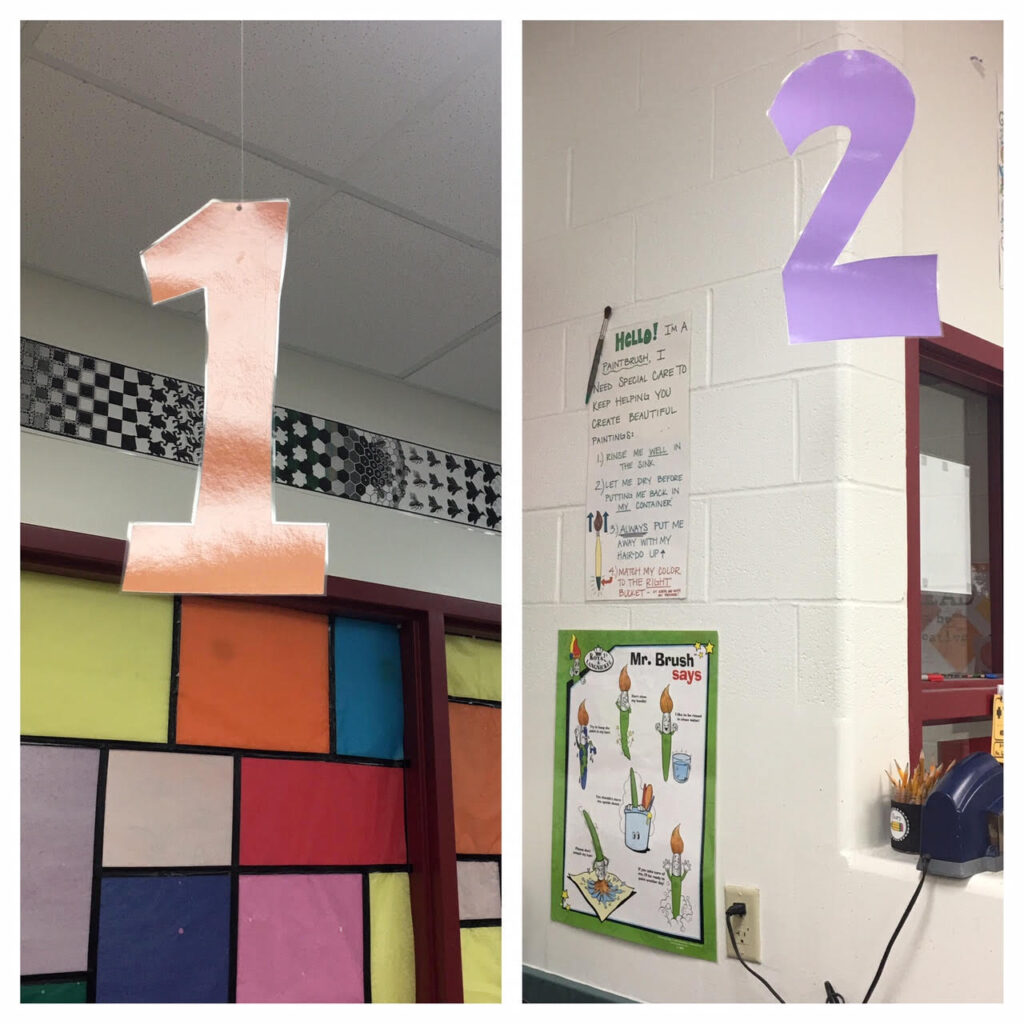
Painting Cart
Depending on your storage situation, you might consider setting up a cart with a few painting supplies. It’s a nice place to store painting placemats, old magazines to use as palettes, and extra gallons of paint. Every time you roll it out, park it in the same place. This way, students not only will learn where to get supplies but also where to put them when they are finished.
Paint
How you distribute paint can vary widely based on the age of your students and room set up. Tempera cake palettes, paper plates, egg cartons, and condiment containers are all good choices. Regardless of the type of paint a class is using, it’s nice to put it out in the same place every time if you can.
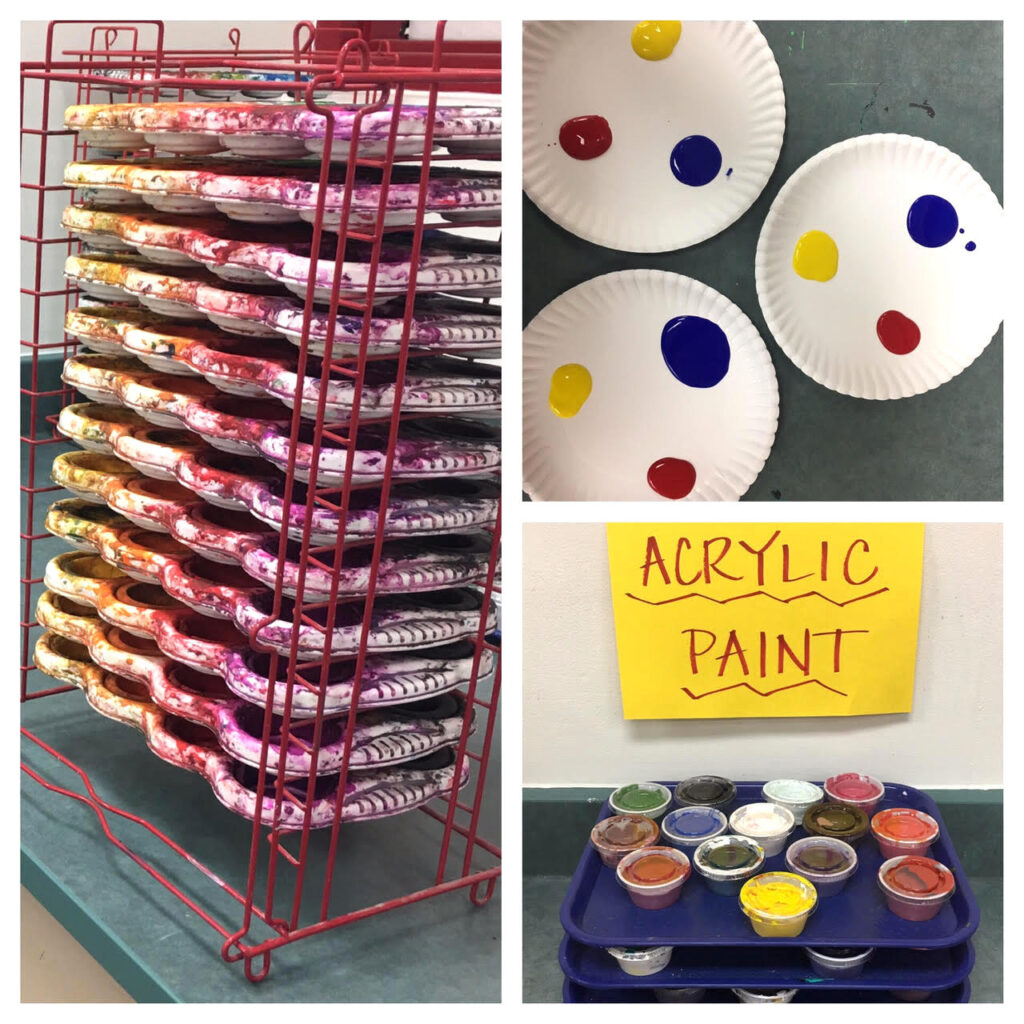
Water Cups
These no-tip cups work really well. However, if they aren’t in your budget, yogurt cups work just fine! Store these right next to your sink on a drinking glass drying mat and tray. This is a great place for an anchor chart to remind students to rinse out the water cups before stacking them up.
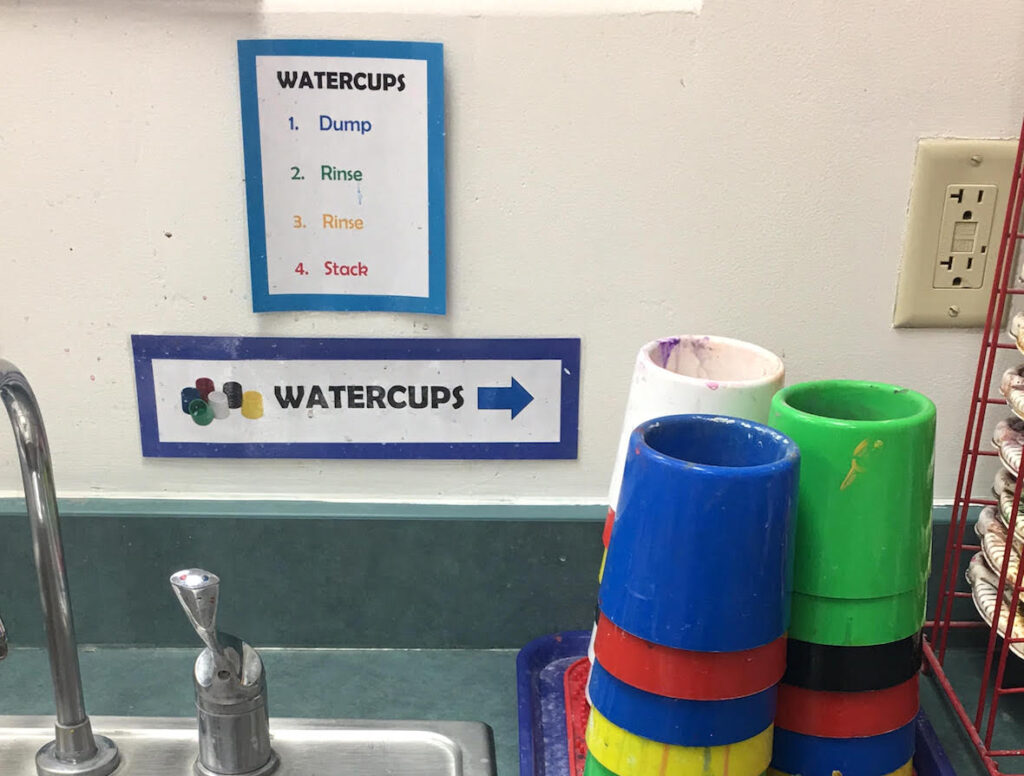
Brushes
Keep related materials together by placing the brushes right next to the water cups. That way it’s a one-stop shop and students can use the cups to carry the brushes to their seats.
2. Remember to include gathering and returning materials in your demonstration.
No matter how many times your students have painted, it’s always nice to mention where materials are located as you demo. If you teach younger students and it’s been a while since you’ve painted, doing a practice run is never a bad idea. Or, have a few students model what it looks like to gather and return materials while the rest of the students watch. Time spent practicing and modeling will save you loads of chaos later in class.
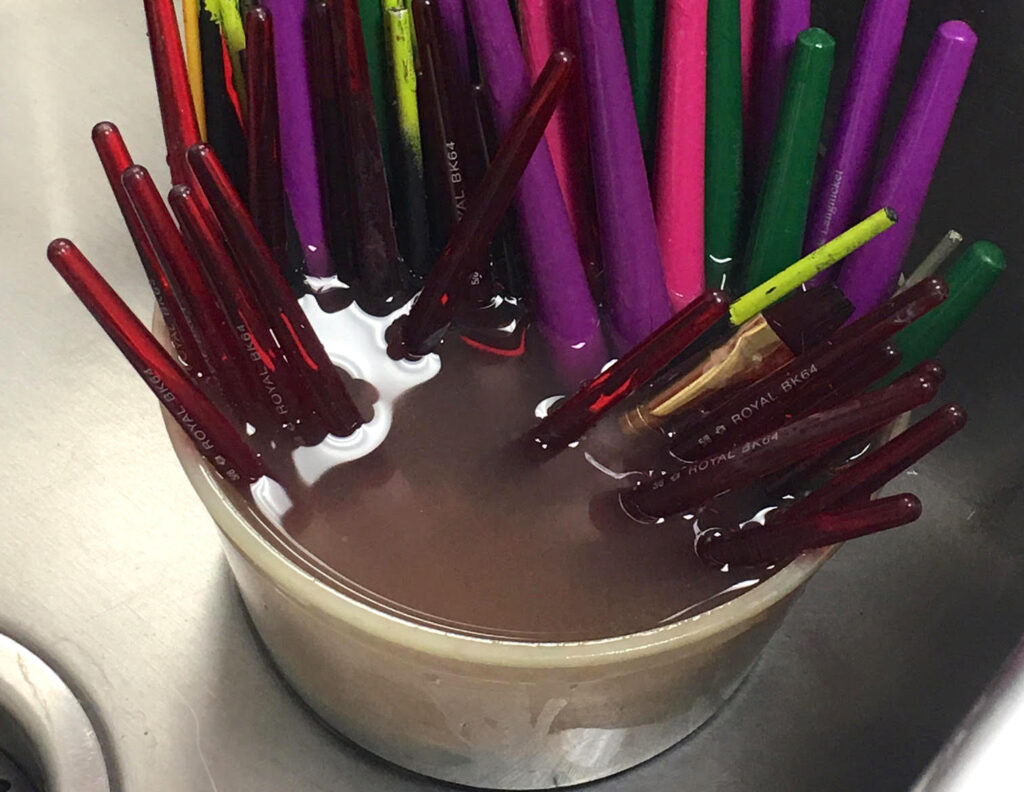
3. Make Your Cleanup Routine Visible
Having a painting cleanup anchor chart, using picture labels for supplies, or projecting the routine on the board during cleanup time are all great ways to ensure students know exactly what is expected. Through practice, students become confident and efficient. They often remind and correct each other.
Here’s one example of a cleanup routine for tempera cakes:
- Walk your placemat and artwork to the drying rack.
- Wash brushes in Sink #2. (Or, for young students: Drop brushes in bucket of water in Sink #2.)
- Dump, rinse, and stack water cups in Sink #1.
- Return tempera cakes to the counter.
- Wash hands and throw away paper towels
- Clean table spots with damp paper towels.
- Sit quietly in your seat.
Routines are useless unless they are communicated and practiced. Practice is essential for any routine to work, especially those involving multiple steps and materials. A successful routine can take many forms. However, the key is allowing students more responsibility and limiting the necessary steps. It’s all about figuring out what works best for you and your students at the present time!
What’s your best tip for paint cleanup?
Have you found a routine that works for you and your students?
Magazine articles and podcasts are opinions of professional education contributors and do not necessarily represent the position of the Art of Education University (AOEU) or its academic offerings. Contributors use terms in the way they are most often talked about in the scope of their educational experiences.





